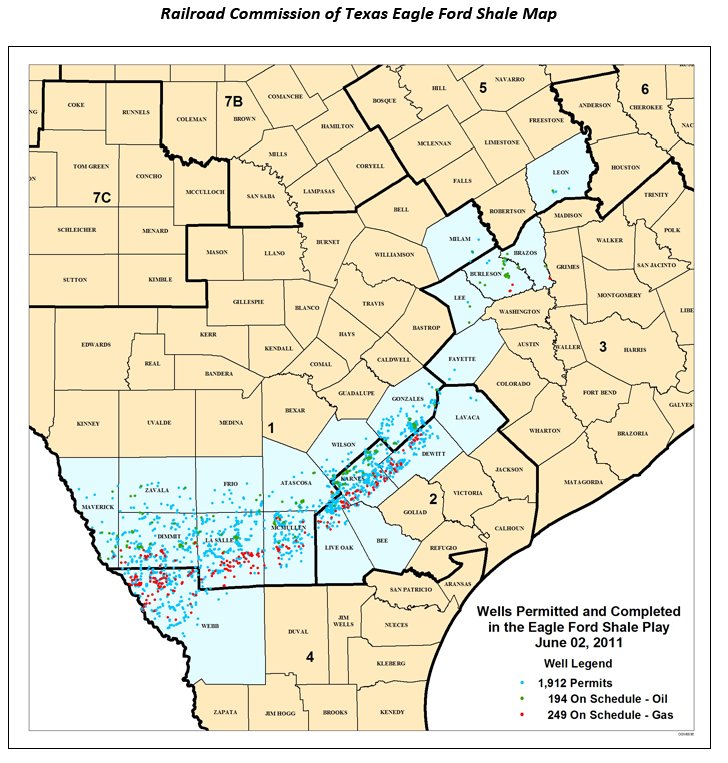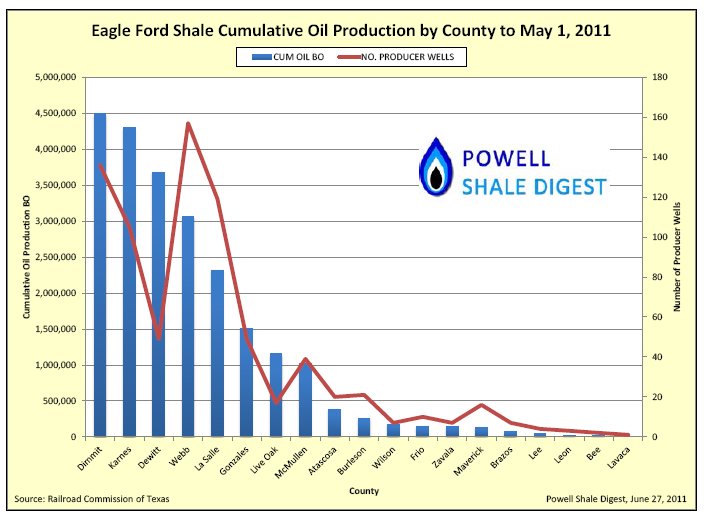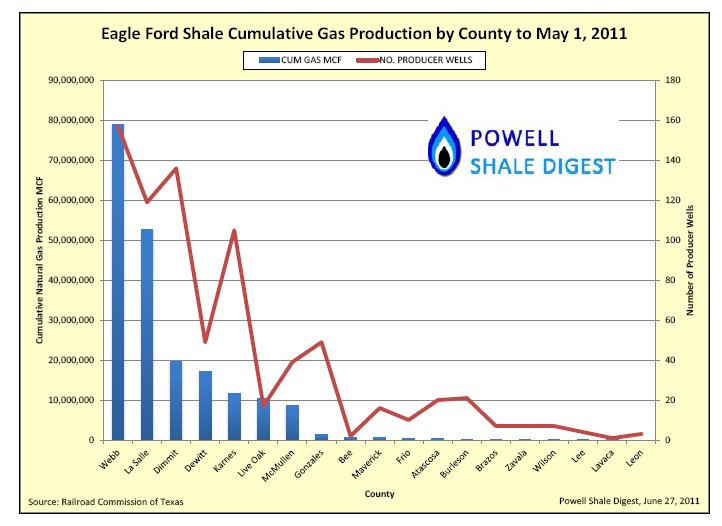I recently spoke at a Continuing Legal Education Program for Texas real estate attorneys about regulation of hydraulic fracturing. My job was to give a short overview of the development of fracing and horizontal drilling in the US and its impact on production and the economy. Here are some slides I used in the presentation.
Below is a photo of a well during the process of fracing. The trucks are big hydraulic pumps, all hooked up to a manifold that is hooked to the well. The earthen tank in the picture is filled with fresh water used in the fracing operation. The water is mixed with sand and chemicals and pumped into the well under high pressure to “frac” the formation. Note that these pad sites are larger than for conventionally drilled wells. One pad site may be used to drill three or six or more wells. The horizontal lateral of the well will be 5,000-8,000 feet.
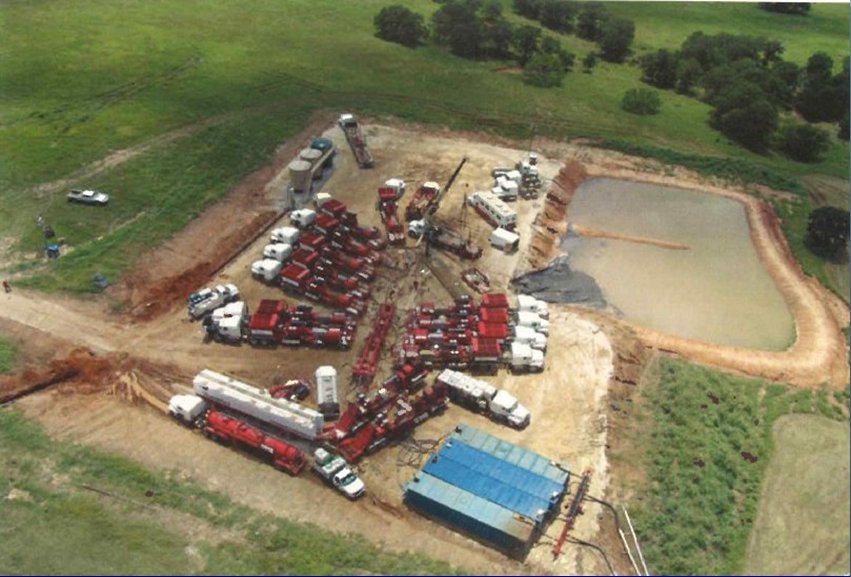
Below is a schematic for a horizontal well, intended to show the distance horizontally between fresh water aquifers and the depth at which the well is completed, and the multiple layers of casing installed between the well and the aquifer to protect fresh water. The distance between fresh water zones and the producing formations varies by field. For the Barnett Shale, fresh water is at about 1,200 feet, and the Barnett Shale is it about 6,500-8,000 feet. For the Haynesville Shale in Lousiana and East Texas, fresh water is at about 400 feet and the formation is at 10,500 to 13,500 feet. For the Marcellus Shale in Pennsylvanie, freshwater is at about 850 feet, and the formation is between 4,500 and 8,500 feet. Here is a video from Chesapeake showing how wells are drilled horizontally.
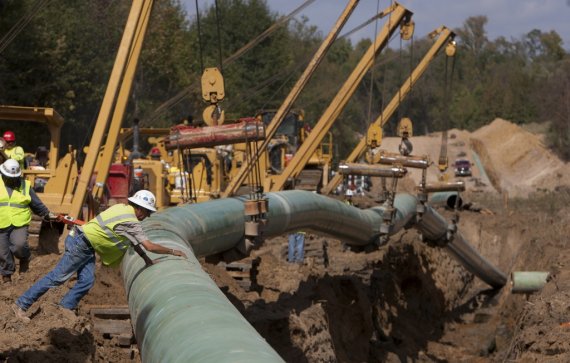
 Oil and Gas Lawyer Blog
Oil and Gas Lawyer Blog



